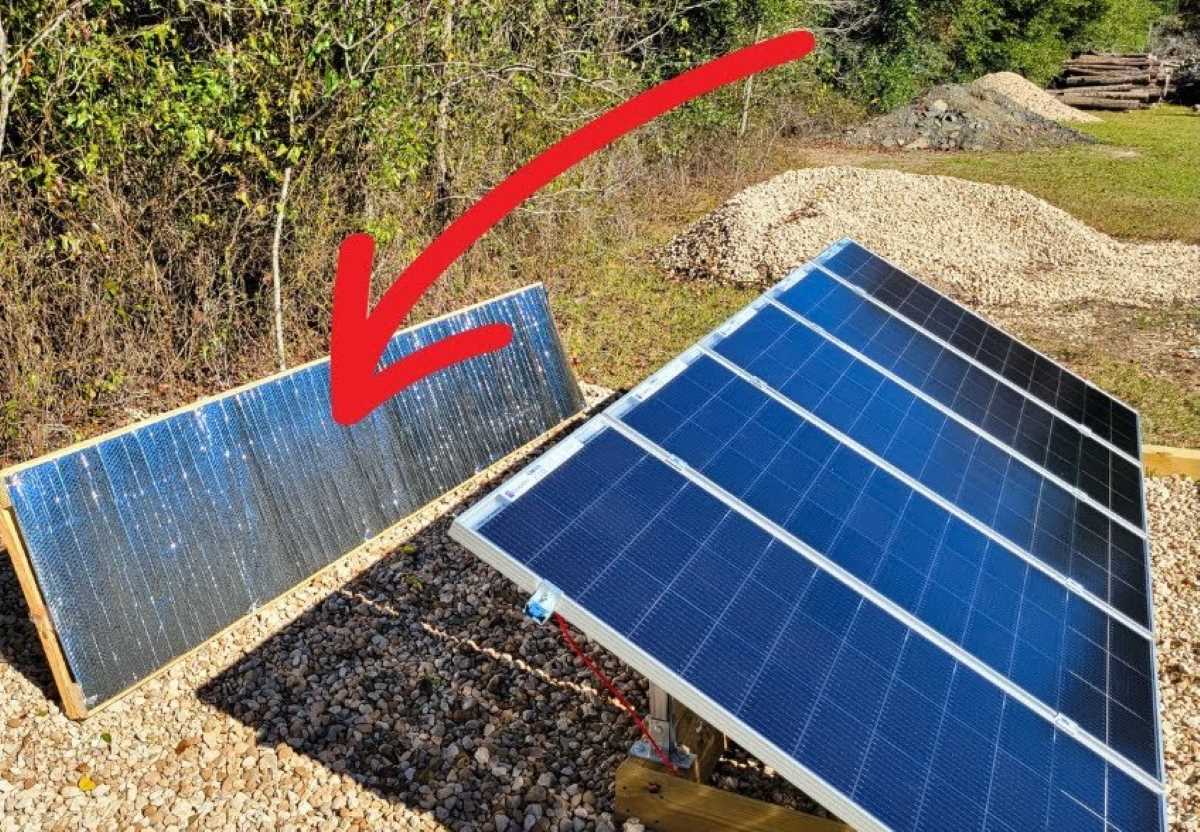
In a world increasingly aware of the need for renewable energy, small tweaks to our home energy solutions can make a big difference. An amateur showed how the efficiency of a balcony solar panel system can be dramatically increased using bifacial technology and some clever tricks.
Dual-Face Technology: Double light capture
Bifacial solar panels differ from traditional panels in their ability to capture sunlight from both sides of the panel. This technique allows you to benefit not only from the light falling directly on the main face of the panel, but also from the light reflected on the back. These solar cells are inserted between two layers of a transparent material, usually glass, and make the most of the available light environment.
Ways to improve: Increase your energy production
1. Soil cleaning method
A simple change like scattering clear stones under the panels can increase soil reflectivity, improving panel efficiency by 3%. By doing this, the creator was able to increase the power output of his panels from 650 to 670 watts.
2. Light wall method
By simulating a light exterior wall using large sheets of cardboard placed behind the panels, more light was reflected towards the back of the panels. This modification provided an additional increase of 15 watts, bringing the total efficiency to approximately a 5% increase.
3. Reflective sheeting method
Finally, implementing a reflector panel mounted on a wooden frame improved light collection. This arrangement reflects sunlight falling directly behind the panels onto the back of the panels, bringing the power output to an impressive total of 773 watts.


Small changes, big results
These home experiments prove that with a little ingenuity and minimal effort, it's possible to dramatically improve the efficiency of bifacial solar panels. Although the efficiency gains promised by some vendors may be exaggerated, achieving a 10 to 15% improvement is certainly realistic and beneficial.
summary:
- 🌞 Improved solar panels: This video focuses on how to improve bifacial solar panels to increase their performance using inexpensive reflective materials.
- 🔍 Use double-sided boards: It is explained that double-sided panels capture light from both sides, unlike traditional panels that capture light from only one side. This makes them ideal for settings where reflection behind panels can be maximized.
- 🛠️ Economic solutions to increase production: The use of different, inexpensive reflective materials, such as white rocks and reflective bubble wrap, is being tested to see how they affect the panel's power output.
- 📉 test grades: Testing shows modest increases in power output due to improved reflection. White rock reinforcement provides a slight boost, while reflective bubble wrap provides better results.
- 🚀 Practical installation tipsTips are provided on how to properly mount these panels and how to adjust settings to maximize performance based on the position of the sun and characteristics of the environment.
Number-based ideas:
- Increased performance with white rocks: An increase of about 3% in power production is observed when white rock is used to increase the reflection behind the panels.
- Using reflective bubble wrap: By using bubble wrap as the reflective material behind the panels, the increase in output is even more significant, indicating a cost-effective strategy for solar system owners.
Specific benefits of bifacial solar panels compared to traditional panels.
Bifacial solar panels have the ability to capture sunlight from both sides of the panel, unlike traditional solar panels that only capture light from one side. This allows them to take advantage of reflected light from the environment, such as nearby surfaces or the ground, to generate additional energy. The video states that this feature is particularly useful in installations where reflectivity behind panels can be improved, which can lead to increased power production without the need for more solar panels. This makes bifacial panels a more energy and space efficient option in suitable locations. In addition, the use of inexpensive reflective materials, such as white rock or reflective bubble wrap, can greatly improve their performance, providing a cost-effective way to increase solar energy production.
How does the immediate environment affect the effectiveness of bifacial solar panels?
The video explains that the immediate environment plays a crucial role in the effectiveness of bifacial solar panels. Since these panels can capture light from both the front and back, having reflective surfaces behind them can significantly increase energy production. He states that surfaces such as concrete, light-colored house walls, or even white rocks can serve to reflect more sunlight toward the back of the panels, which are used due to their diode ability.
It also highlights the importance of taking into account surface type and color, as dark surfaces or surfaces that do not reflect light well will not contribute significantly to the panel’s performance. Additionally, it tests the theory that even cheap and simple materials, such as reflective bubble wrap, can be effective in increasing the production of panels when placed behind them, showing that even small changes in the environment can have a noticeable impact on the energy efficiency of a system. Solar.
What reflective materials not tested in the video could be effective in increasing solar panel production?
The video focuses primarily on using white rocks and reflective bubble wrap as a way to increase reflectivity behind dual-sided solar panels. However, there are other substances not mentioned in the video that can be equally or even more effective for this purpose:
- Mirrors: Although briefly mentioned, the mirror test was not performed in the video. Mirrors can provide high reflectivity, efficiently direct sunlight onto panels, and potentially significantly increase energy production.
- Polished metal sheets: Similar to mirrors, metal sheets such as polished aluminum can reflect a large amount of light onto the panels.
- Specialized reflective coating: There are paints designed to reflect sunlight that can be applied to surfaces near panels to improve the effectiveness of bifacial panels.
- Ceramic or glass surfaces: Some types of ceramic or glazed tiles have reflective properties that could be explored for this use.
These materials can offer varying degrees of improvement in power production depending on their ability to effectively reflect sunlight toward the back of the solar panel. Experimenting with a variety of materials can provide innovative and effective solutions for improving bifacial solar panel systems.



:quality(85)/cloudfront-us-east-1.images.arcpublishing.com/infobae/BQRX3KS6VBDIPDLAAEOCGXSXCQ.jpeg)
:quality(85)/cloudfront-us-east-1.images.arcpublishing.com/infobae/M2WM2XUC45HSLIFGISE2ZUIZXU.jpeg)
